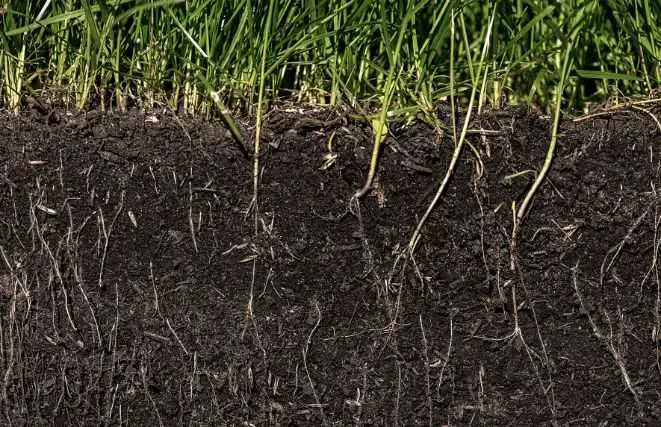Pampas grass (Cortaderia selloana) has a deep and extensive root system that can grow up to 11 feet deep in well-drained soil. This allows the plant to access water and nutrients from deeper soil layers, making it more drought-tolerant than other grasses.
However, in areas with heavy clay soils or poor drainage, the roots of pampas grass may not grow as deep and may instead spread horizontally closer to the surface. In these conditions, the plant may be more susceptible to waterlogging and root rot.
How deep the roots of pampas grass are?
Pampas grass is a tall ornamental grass that is native to South America. The depth of its roots can vary depending on a variety of factors, such as the age and size of the plant, the type of soil it’s growing in, and the climate and water availability in the area.
It turns out that these grasses have surprisingly deep roots, which can reach up to 11 feet in length according to the Arizona Native Plant Society. This is due to the fact that pampas grass has evolved in order to survive in areas with poor soil and limited water. As a result, it has developed an extensive root system that allows it to draw nutrients from deeper layers of soil.
How to Remove or Uproot Pampas Grass
Because of its massive root system, removing or uprooting this grass can be difficult. However, there are two ways that you can do despite its hardiness and largeness.
Digging up Pampas Grass
Removing or uprooting pampas grass can be a challenging task due to its deep root system and sharp, serrated leaves. Here are some steps you can follow to remove pampas grass:
- Wear protective clothing and gloves to avoid injury from the sharp leaves.
- Cut back the leaves and stems of the plant as close to the ground as possible using pruning shears or a saw.
- Dig around the base of the plant with a shovel to expose the roots. Try to dig as deep as possible to get to the main roots.
- Use a hand saw or pruning saw to cut the main roots as close to the base of the plant as possible.
- Grasp the base of the plant and pull it out of the ground. If the root system is too deep, you may need to use a shovel to loosen the soil around it.
- Dispose of the plant and its roots in a trash bag or compost pile. Do not dispose of the plant material in natural areas, as it can become an invasive species and harm the local ecosystem.
- Repeat this process for any remaining pampas grass plants.
Chemical
This process uses Haloxyfop or Glyphosate herbicides. It requires minimal physical effort but can cost you more. Before doing this process, always remember that these chemicals are very toxic and dangerous to your health so it is recommended to always wear protective gear such as hand gloves, eyeglasses, long sleeve shirts, pants, and a respirator and follow the instructions carefully on how to use it.
Start with cutting the grasses close to the soil as possible and dig it a bit so that it gives enough space for the herbicide to penetrate.
Keep in mind that this method also requires diligence as the chemical takes up to two weeks for it to remove the roots. You may need to repeat the process one week later as some of the left-over cut grasses have still the ability to absorb the nutrients from the soil encouraging the grass to grow again.
Other Things to Consider When Removing Pampas Grass Roots
- Rocking the rootstock back and forth in the ground also helps in removing the roots but it takes time.
- When digging the roots, you can use different tools such as pickaxe, pointed spade, long-handled lopper shears or shovel.
- It is advisable to harvest the other surrounding plants or crops near your pampas grass before applying the herbicide to avoid contamination.
FAQ
Planting pampas grass close to a house is possible, but it requires careful consideration. Ensure there is sufficient space for the plant to grow without interfering with the structure or other plants. Research whether pampas grass is invasive in your area, as it can spread rapidly. Keep in mind that dried plumes may shed particles, potentially causing inconvenience if planted too close to windows or outdoor areas. Regular maintenance and pruning are necessary to control its growth. Evaluate these factors before deciding to plant pampas grass near your house.
Pampas grass can have invasive roots, spreading beyond the initial planting site and potentially displacing native vegetation. Its extensive root system allows it to adapt to various soil types and grow vigorously. In some regions, pampas grass is considered an invasive species, causing ecological imbalances. To control its invasiveness, regular maintenance is necessary, monitoring for spreading and promptly removing unwanted shoots or rhizomes. Proper disposal of plant material is important to prevent regrowth.
Digging up pampas grass can be a challenging task due to its extensive and sturdy root system. The plant has deep and fibrous roots that firmly anchor it in the ground, making manual removal difficult. To dig up pampas grass, prepare the area, wear protective gear, use a shovel or spade to sever the roots, lift the clump out of the ground, and properly dispose of it. However, the size and age of the plant can affect the difficulty of removal. If faced with significant challenges or concerns, it is advisable to seek professional assistance.
Conclusion
Growing and cultivating this grass is simple but removing it can be a daunting experience. The answer to the question “How deep are pampas grass roots” makes sense on how challenging the removal process can be.








